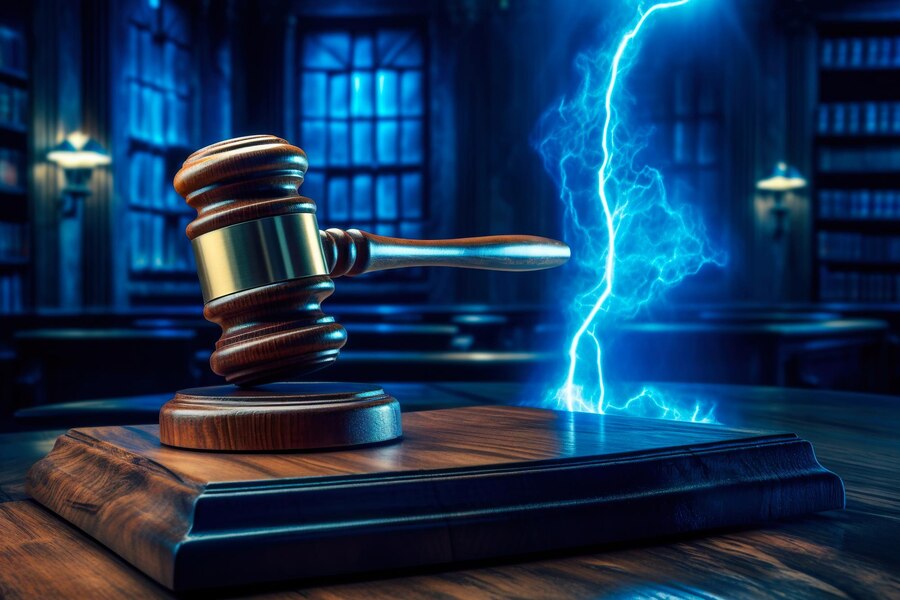Introduction to the Steam Lawsuit
The Steam lawsuit involves legal action against Steam, a popular digital game distribution platform. The lawsuit is about complaints from users or companies against Steam. These complaints often focus on issues like unfair practices, pricing, or how Steam handles its services.
The Steam lawsuit is important in the gaming industry. Steam is a major player in this field, and the outcome of this case can affect how other companies operate. The lawsuit might lead to changes in Steam’s business practices. It can also influence how games are sold and distributed. This case highlights issues of fairness and competition in the gaming world.
Background of Steam
History and Development of Steam
Steam started in 2003, created by Valve Corporation. Initially, it was a tool for updating and managing Valve’s games. Over time, it expanded into a major digital distribution platform. Steam now offers a vast library of games and software. It has grown into a key player in the gaming industry, changing how games are delivered to players.
Overview of Steam’s Business Model and Its Impact on the Gaming Market
Steam’s business model focuses on selling games and software through its platform. Users purchase games from the Steam store and download them directly to their devices. Steam earns revenue by taking a percentage of each sale.
This model has greatly influenced the gaming market. Steam made it easier for developers, especially smaller ones, to reach a wide audience. It set new trends in digital game sales and distribution. Other platforms have followed Steam’s lead, shaping the way games are sold and how the industry operates.
The Nature of the Steam Lawsuit
Detailed Description of the Lawsuit’s Origins
The Steam lawsuit began due to complaints from users or companies about Steam’s practices. These issues often involve disputes over how Steam handles pricing, game distribution, or user rights. The lawsuit emerged as parties sought legal action to address these concerns. The case may have started with individual complaints or a larger class action.
Key Parties Involved
- Plaintiffs: The plaintiffs in the Steam lawsuit are the parties who filed the complaint. They may include users who feel wronged by Steam’s practices or companies that believe Steam has acted unfairly.
- Defendants: The main defendant in this lawsuit is Steam, represented by Valve Corporation. Valve is responsible for defending against the claims made by the plaintiffs.
- Legal Representatives: Each side has legal representatives who argue their case in court. These lawyers present evidence and make legal arguments to support their clients’ positions.
Allegations and Claims Made in the Lawsuit
The lawsuit includes several allegations against Steam. Common claims involve:
- Unfair pricing practices
- Issues with game distribution and access
- Concerns about user rights and refunds
The plaintiffs argue that Steam has violated certain laws or regulations. They seek remedies such as compensation or changes to Steam’s practices. The outcome of the lawsuit will determine if these claims are upheld and what changes might occur.
Legal Issues and Arguments in the Steam Lawsuit
Overview of the Main Legal Arguments Presented
The Steam lawsuit involves several significant legal arguments. The plaintiffs claim that Steam has engaged in unfair practices. One key argument is unfair pricing, where plaintiffs allege that Steam has manipulated game prices in a way that harms consumers. Another argument is about restricted access, with claims that Steam has imposed unfair limitations on game usage or availability. Additionally, the lawsuit addresses refund policies, with disputes over how Steam handles refunds and the rights of users in such situations. These arguments are based on the belief that Steam’s practices violate consumer protection laws or other regulations.
Analysis of the Legal Precedents or Laws Being Cited
In the Steam lawsuit, several legal precedents and laws are cited. Consumer protection laws are central to the case, designed to ensure that buyers are treated fairly and are protected from deceptive practices. The lawsuit also references antitrust laws, which prevent companies from engaging in practices that limit competition or harm the market. Contract laws come into play as well, with arguments about whether Steam’s terms of service and contracts with users meet legal standards. The plaintiffs use past rulings on digital distribution and consumer rights to support their claims, influencing how the court may view the case.
Potential Implications for Steam and the Broader Industry
The outcome of the Steam lawsuit could have far-reaching effects. For Steam, a negative ruling might require significant changes to its operations, such as adjustments to its pricing structure, access policies, and refund procedures. For the broader industry, the case could set important precedents on how digital platforms manage similar issues. It may lead other companies to review and adjust their practices to avoid similar legal challenges. Additionally, the lawsuit might result in increased regulation in the gaming market, influencing industry standards and practices.
Reactions and Impact of the Steam Lawsuit
Reactions from Steam, the Plaintiffs, and Other Stakeholders
The Steam lawsuit has elicited various reactions from involved parties. Steam has generally responded by defending its practices. The company may argue that its pricing, access policies, and refund procedures are fair and within legal bounds. Steam could also emphasize its efforts to improve user experience and address any issues raised.
The plaintiffs have expressed concerns about how Steam handles pricing, access, and refunds. They argue that their claims are based on unfair practices and seek changes to Steam’s policies or compensation for damages. Other stakeholders, such as gaming industry analysts and advocacy groups, may weigh in on the case. They might discuss the potential implications of the lawsuit for industry standards and consumer rights.
How the Lawsuit Has Affected Steam’s Operations and Reputation
The lawsuit has impacted Steam’s operations and reputation. The company may have faced increased scrutiny over its business practices. This scrutiny could lead to changes in how Steam manages pricing, game access, and refunds. Steam might also implement new policies or make adjustments to address the concerns raised by the lawsuit.
Reputationally, Steam may have been affected by the negative publicity surrounding the case. Users and the public might view Steam differently, especially if the lawsuit highlights issues with fairness or transparency. The company’s response to the lawsuit can also influence how it is perceived by consumers and industry peers.
Potential Impact on Gamers and the Gaming Industry
The Steam lawsuit could have several potential impacts on gamers and the gaming industry. For gamers, the lawsuit might lead to better protections and clearer policies regarding pricing, access, and refunds. If the case results in changes to Steam’s practices, it could improve the user experience for those purchasing and using games on the platform.
For the gaming industry as a whole, the lawsuit may set new precedents for how digital distribution platforms operate. Other companies might adjust their practices in response to the case, leading to broader changes in industry standards. The lawsuit could also prompt more regulation and oversight in the gaming market, affecting how games are sold and distributed.
Current Status and Developments in the Steam Lawsuit
Latest Updates on the Lawsuit
As of now, the Steam lawsuit is ongoing with several developments. The case may have progressed through various stages of litigation, including preliminary hearings or motions. Recent updates could involve new filings or changes in the legal strategies of the parties involved. Keeping an eye on legal news sources can provide the most current information on how the lawsuit is unfolding.
Key Court Rulings or Decisions Made So Far
So far, there may have been key court rulings or decisions in the Steam lawsuit. These rulings could include:
- Dismissals: If certain claims were dismissed, the court might have found them lacking in merit.
- Injunctions: The court may have issued temporary orders affecting Steam’s operations or practices while the case proceeds.
- Preliminary Rulings: Early decisions on the admissibility of evidence or the scope of the lawsuit can shape how the case develops.
These rulings influence the direction of the lawsuit and may impact the strategies of both Steam and the plaintiffs.
Any Settlements or Ongoing Negotiations
There could be ongoing negotiations or settlements in the Steam lawsuit. If the parties involved seek to resolve the case without a full trial, they might enter settlement discussions. A settlement could involve Steam agreeing to change certain practices, provide compensation, or take other actions to address the plaintiffs’ concerns.
If a settlement has been reached, the details would be announced publicly, including any changes Steam agrees to make. If negotiations are ongoing, the outcome remains uncertain, and the case may continue through the court system until a resolution is reached.
Future Implications of the Steam Lawsuit
Potential Outcomes and Their Implications for Steam
The Steam lawsuit could lead to several potential outcomes. If the court rules against Steam, the company might be required to make significant changes. These could include altering pricing practices, adjusting game access policies, or revising refund procedures. Such changes could impact Steam’s business model and operational strategies. Additionally, a negative ruling might affect Steam’s reputation, potentially leading to a loss of consumer trust.
Conversely, if Steam prevails, the company may continue its current practices without major alterations. However, the lawsuit might still have long-term effects on Steam’s approach to user relations and business practices, as the company may adopt new measures to prevent future legal issues.
Possible Changes in Industry Practices or Regulations as a Result of the Lawsuit
The Steam lawsuit could drive changes in industry practices and regulations. If the court issues a ruling or settlement, it might set a precedent for how digital platforms manage pricing, access, and refunds. This could lead to more stringent regulations and standards in the gaming industry.
Other digital distribution platforms might adjust their practices to align with new legal standards or to avoid similar legal challenges. For instance, they might implement clearer refund policies or improve transparency in pricing. The lawsuit could prompt industry-wide discussions about fairness and consumer rights, leading to changes in how games are sold and distributed.
How Other Companies in the Industry Might Be Affected
The outcome of the Steam lawsuit could influence other companies in the gaming industry. If Steam is required to change its practices, competitors may follow suit to stay competitive and avoid legal risks. Companies might revise their terms of service, update pricing strategies, or improve customer support.
The case might also lead to increased scrutiny and regulation of digital platforms. As a result, companies across the industry may face new compliance requirements and adjust their business models accordingly. The lawsuit could create a ripple effect, prompting industry-wide changes in how digital distribution and consumer protection are handled.
Conclusion
The Steam lawsuit addresses significant issues related to Steam’s pricing, access, and refund policies, highlighting concerns about fairness and consumer rights in the gaming industry. The case involves key arguments about unfair practices and has led to various reactions from Steam, the plaintiffs, and other stakeholders. As the lawsuit progresses, it could result in changes to Steam’s operations, impact industry practices, and influence how digital platforms handle similar issues. The outcome of the Steam lawsuit may set important precedents, shaping the future of digital distribution and consumer protection in the gaming market.
FAQs
1. What is the Steam lawsuit about?
The Steam lawsuit involves legal action against Steam, focusing on claims of unfair practices related to pricing, game access, and refund policies. The plaintiffs argue that Steam’s methods violate consumer protection laws and seek changes to Steam’s business practices or compensation.
2. Who are the main parties involved in the Steam lawsuit?
The main parties in the Steam lawsuit are the plaintiffs, who are individuals or companies filing the complaint, and Steam, represented by Valve Corporation. Each side has legal representatives who present their arguments in court.
3. How has the lawsuit affected Steam users?
The lawsuit has raised awareness among Steam users about potential issues with pricing, access, and refunds. It may lead to changes in Steam’s policies that could improve user rights and experiences. The case has also increased scrutiny of Steam’s practices.
4. What are the possible outcomes of the Steam lawsuit?
Possible outcomes of the Steam lawsuit include a court ruling that may require Steam to alter its practices or a settlement that addresses the plaintiffs’ concerns. The case might result in changes to pricing, access policies, or refund procedures, affecting how Steam operates.
5. How can the lawsuit impact the gaming industry as a whole?
The lawsuit could have broad implications for the gaming industry. It may set legal precedents that influence how digital distribution platforms handle similar issues. The case might lead to industry-wide changes in practices and regulations, affecting how games are sold and how consumer rights are protected.












Got a Questions?
Find us on Socials or Contact us and we’ll get back to you as soon as possible.